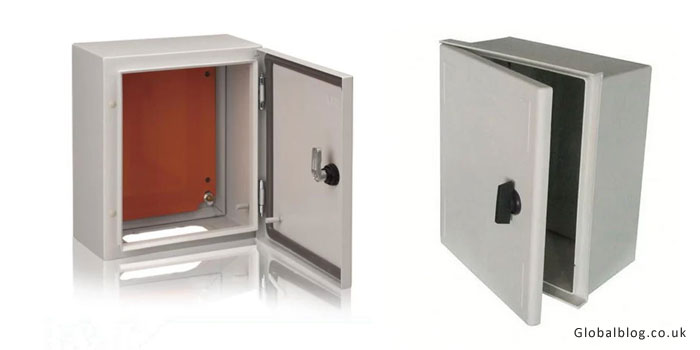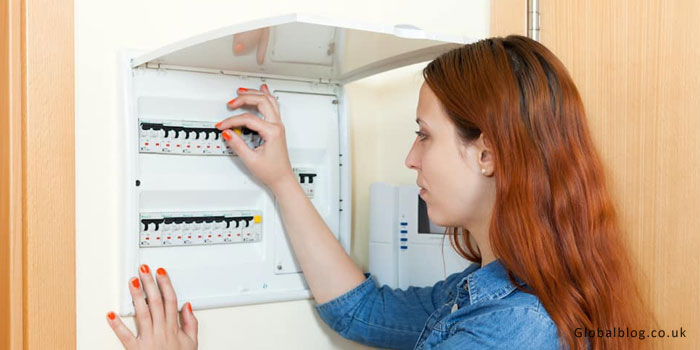Introduction to Electrical Box Covers
When it comes to electrical safety, many homeowners overlook a crucial component: the electrical box cover. This seemingly simple piece of hardware plays a vital role in protecting your home and family from potential hazards. Whether you’re renovating or simply conducting routine maintenance, understanding the importance of an electrical box cover can make all the difference. It’s time to shed some light on why these covers are essential and how you can ensure they’re properly installed to keep your space safe and looking great!
Why is it important to have a cover for your electrical box?
An electrical box cover serves several essential purposes. First, it protects the internal wiring from dust and debris. Over time, accumulation can lead to short circuits or even devastating fires.
Additionally, a cover acts as a barrier against moisture and other environmental elements. Without proper protection, these factors can corrode connections and compromise safety.
Safety is another significant consideration. An uncovered electrical box poses risks for accidental contact with live wires. This can result in severe injuries or electrocution.
Moreover, many local codes require that electrical boxes are covered for liability reasons. Compliance not only keeps your home safe but also aligns with building regulations.
An aesthetically pleasing cover enhances the overall appearance of your space while ensuring functionality remains intact. Keeping things tidy goes a long way in maintaining both safety and style in your home environment.
Types of Electrical Box Covers
When it comes to electrical box covers, variety is key. Different environments and needs call for specific types. One common option is the plastic cover, which offers lightweight protection against dust and moisture.
For outdoor applications, metal covers are often preferred due to their durability. They can withstand harsh weather conditions while providing excellent shielding from physical damage.
Then there’s the weatherproof cover designed specifically for exterior installations. These come with gaskets or seals that keep water out, ensuring safety and functionality in wet conditions.
Consider decorative options if aesthetics matter. Some covers come in various styles and colors, allowing you to blend them seamlessly with your home décor without sacrificing safety standards. Each type serves a unique purpose, so choose wisely based on your specific requirements!
Step-by-Step Guide on How to Install an Electrical Box Cover
Start by gathering your tools. You will need a screwdriver, a voltage tester, and possibly pliers.
First of all, shut off the power at the route breaker. This is crucial for your safety.
Next, use the voltage tester to ensure that no electricity is flowing to the box. Double-checking gives you peace of mind before proceeding.
Now it’s time to position the cover over the electrical box. Align it carefully with any screw holes present.
Secure it in place using screws or clips provided with your cover. Tighten them gently but firmly; too much pressure can damage materials.
Once attached, restore power at the circuit breaker and test if everything functions correctly.
Regularly inspect your installation for wear or loose fittings as part of ongoing maintenance.

Safety Precautions when Installing an Electrical Box Cover
When installing an electrical box cover, safety should be your top priority. Start by make sure the power is turned off at the circuit main breaker. This easy step can stop accidents and injuries.
Wear the protective gear such as goggles and gloves to shield you from any potential hazards. It’s also wise to work in a well-lit area so you can clearly see what you’re doing.
Use insulated tools whenever possible. They provide an extra layer of protection against electric shock while you handle wires or screws.
Be mindful of your surroundings. Keep children and pets away from the workspace, reducing distractions that could lead to mistakes.
If you’re unsure about any aspect of the installation process, don’t hesitate to consult a professional electrician for guidance. Proper knowledge is key to maintaining safety throughout the project.
Maintenance and Care for Your Electrical Box Cover
Maintaining your electrical box cover is essential for safety and longevity. Regularly inspections can the help you vicious circle any issues early on. Look for cracks, staining, or loose fittings.
Cleaning the cover should be part of your routine. Use a moist cloth with gentle soap to wipe down outsides. Avoid cruel chemicals that could injure the material over time.
Ensure that screws are tight but not overly tightened, as this can lead to stripping or cracking. If you notice rust on metal covers, address it immediately to prevent further corrosion.
Check seals and gaskets regularly too. These components protect against moisture and dust infiltration, which can cause electrical problems later on.
If you live in an area prone to severe weather, consider inspecting more frequently after storms or strong winds. This proactive approach ensures both functionality and safety throughout the year.
Conclusion: Electrical Box Cover
When it comes to electrical safety, an electrical box cover plays a crucial role. It shields your wiring from dust, moisture, and accidental contact. By ensuring that all exposed components are securely enclosed, you can prevent potential hazards and prolong the life of your electrical systems.
Once installed, regular maintenance ensures that your electrical box cover remains in excellent condition. Periodic checks can help catch any wear or damage early on.
Taking these steps contributes significantly toward maintaining a safe living environment while optimizing the performance of your home’s electrical system. Prioritizing this aspect of home care keeps everything running smoothly and securely over time.
